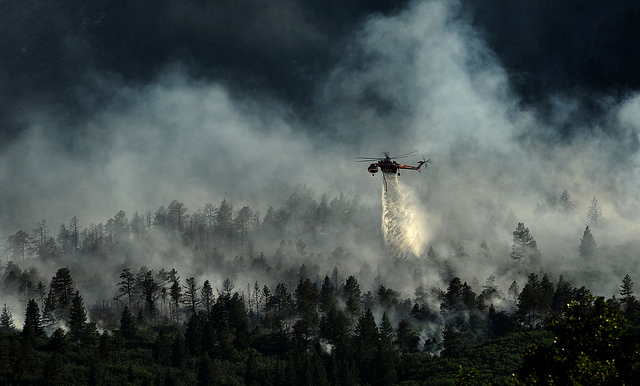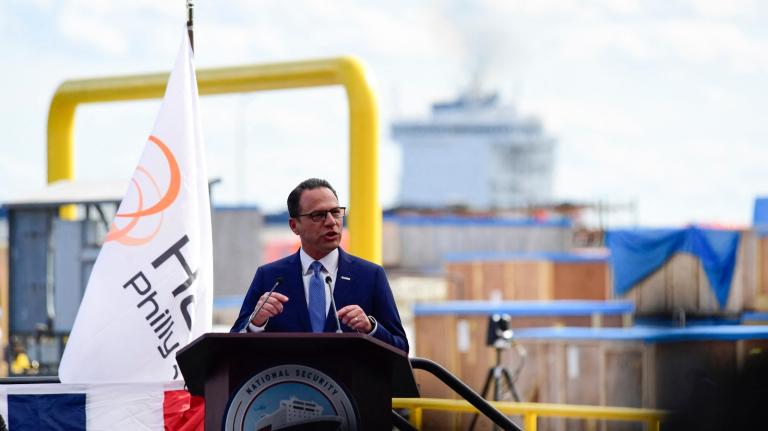
OMG, the tar sands are coming!
After a seven-month investigation, InsideClimate News has published an in-depth series on “the biggest oil spill you’ve never heard of” — a million-gallon-plus spill of oil-sands crude near Kalamazoo, Mich., in July 2010. If you like your summer reading on the heavy side, dive right into part one, or download the whole series as an e-book.
Or you can get the highlights lowlights right here:
The takeaway: Tar-sands spills are incredibly, frighteningly difficult to clean up. And it’s this same kind of oil that would be pumped through the Keystone XL pipeline if it gets built, sent 1,700 miles right down the middle of the country, and right over the Ogallala Aquifer, a major source of freshwater for drinking and irrigation.
Tar-sands or oil-sands crude — technically called bitumen — is goopy, tricky stuff:
Bitumen is so thick — about the consistency of peanut butter — that it doesn’t flow from a well like the crude oil found in most of the nation’s pipelines. Instead the tarry resin is either steamed or strip-mined from sandy soil. Then it is thinned [by about 30 percent] with large quantities of liquid chemicals so it can be pumped through pipelines. These dilutents usually include benzene, a known human carcinogen. At this point it becomes diluted bitumen, or dilbit.
This spill from a pipeline into a tributary of the Kalamazoo River was the first major spill of dilbit in U.S. waters, so “cleanup experts at the scene were unprepared for the challenge”:
Instead of remaining on top of the water, as most conventional crude oil does, the bitumen gradually sank to the river’s bottom, where normal cleanup techniques and equipment were of little use.
…
The EPA has supervised the cleanup of nearly 8,400 spills since 1970, but in multiple interviews with InsideClimate News, agency officials said the [Michigan] spill cleanup was unlike anything they’d ever faced.
…
“We had no idea sinking oil would be such a problem,” [said Mark Durno, the EPA deputy incident commander for the spill, who has 20 years’ experience]. “Not only was this material submerged but it was mobile and moving along the river bottom.”
The situation was made even more difficult because the EPA and other responders didn’t know they were dealing with tar-sands oil until more than a week after the spill. That’s because pipeline operators aren’t required to disclose what specific kind of crude they’re pumping — even after an accident. Canada-based Enbridge, the company that owns and operates the pipeline, didn’t volunteer the information after the spill; in fact, when company officials, including CEO Patrick Daniel, were asked directly whether the pipeline was carrying tar-sands oil, they repeatedly denied it. As later came to light, they were making a minor technical distinction, but for all practical purposes, their pipeline was carrying what’s commonly called tar-sands oil.
Pipeline companies also aren’t required to disclose what chemicals they mix with bitumen to make it thin enough to flow down a pipeline — that’s considered a trade secret. This is particularly scary because these diluents evaporate into the air after a spill, and any people unlucky enough to be nearby breathe in the mysterious mixture. In this case, Enbridge’s chemical brew made a lot of people sick:
A survey of four riverside communities that the Michigan Department of Community Health conducted within a month of the spill found that almost 60 percent of the 550 people interviewed experienced headaches, breathing difficulties, coughs, vomiting, anxiety or other health problems.
Officials initially estimated that the spill would be cleaned up in a couple of months. Nearly two years later, it’s still not done — and it likely never will be, because scraping up all of the oil would destroy riverbeds. Gentler cleanup efforts continue. Meanwhile, about 150 households have been permanently relocated.
Enbridge has so far spent more than $765 million to clean up its mess, making this “the most expensive oil pipeline spill since the U.S. government began keeping records in 1968.”
But that hasn’t dissuaded Enbridge from expansion plans. It’s applied for permission to replace the pipeline that leaked in Michigan with a new, larger one that would have almost twice as much capacity, and it’s proposed a number of other new pipelines in the U.S. and Canada, including some that would carry tar-sands oil.
The Natural Resources Defense Council and other watchdog groups contend that diluted bitumen is more corrosive than conventional oil and leads to more pipeline leaks. Industry denies it. Unfortunately, with so many tar-sands pipelines in the works, we’re likely to find out the hard way who’s right and who’s wrong.



